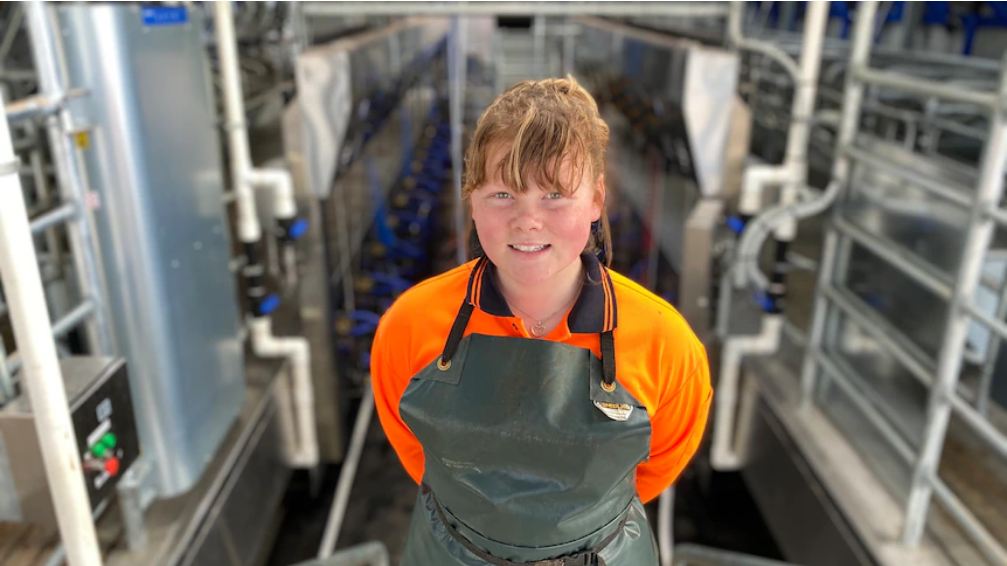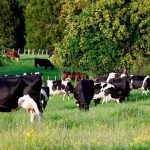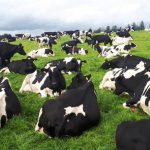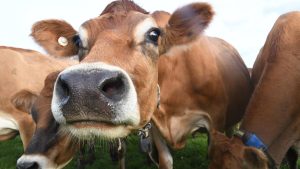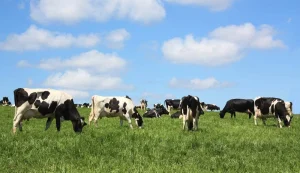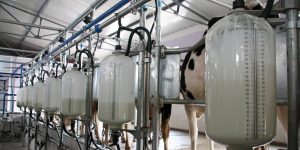
The 17-year-old pushes the cows up a muddy track and into a dairy, where she attaches suction cups to their udders.
These daily milkings at Sheffield Farm School in Tasmania’s north-west have long helped cultivate the next generation of the dairy industry.
But the cramped, 50-year-old milking shed where students like Crystal once learned the trade has been replaced by a technology-driven operation.
“But then as I got into it I found there was a lot more than just bringing them in and milking.”
The new dairy is part of a multimillion-dollar redevelopment at Sheffield Farm School and is the latest in a line of government and industry initiatives to develop the dairy workforce.
It is a critical priority for an industry that is primed for growth but fears a lack of skilled workers could curtail expansion.
Assistant principal Jamie Skirving believes students need to be exposed to the wealth of career pathways in dairy; from animal health to business management and technology.
But he knows students will hardly be inspired to pursue a career in dairy if they’re training on antique equipment.
“To show the students what the dairy industry has to offer, we needed a new facility that was better suited to teaching and learning and obviously bringing it a bit closer to the realities of working on a farm these days.”
Workforce a persistent concern
Finding enough skilled workers has been a persistent problem for the dairy industry, especially as farms become larger, more complex and technological.
It’s a particular concern on properties with 500 cows or more, with the 2020 National Dairy Farmers Survey finding 70 per cent of farms “finding it difficult to recruit staff”.
The situation is compounded by current travel restrictions, which have cut off the supply of international workers.
Dairy Australia’s latest Situation and Outlook Report warned that “limited” employment options meant some affected businesses were “expected to continue diversifying away from dairy”.
Industry organisations like Dairy Australia have been keen to invest in training initiatives to try and alleviate the workforce woes.
But despite these labour challenges, optimism abounds among dairy farmers as they reap the rewards of good milk prices, favourable weather conditions and strong consumer demand.
‘Holistic approach’ to staffing
Mark Griffin’s family has been milking cows for 170 years and he believes the workforce issue “won’t be changed overnight”.
“But, if we get into schools early enough,” the Moltema farmer said.
“[Then] we’ll see that turnaround.”
Finding new workers is only the first step; keeping them in the industry long-term is the challenge.
Mr Griffin has put worker retention front and centre over the past few years and he spends a lot of time ensuring his staff are well trained, can share their input and build a career in dairy.
“We do put a huge emphasis on the retention rate,” he said.
“[This means] having a holistic approach and understanding all the pieces of the puzzle for the employees — not just in the workplace but in their personal lives as well.
